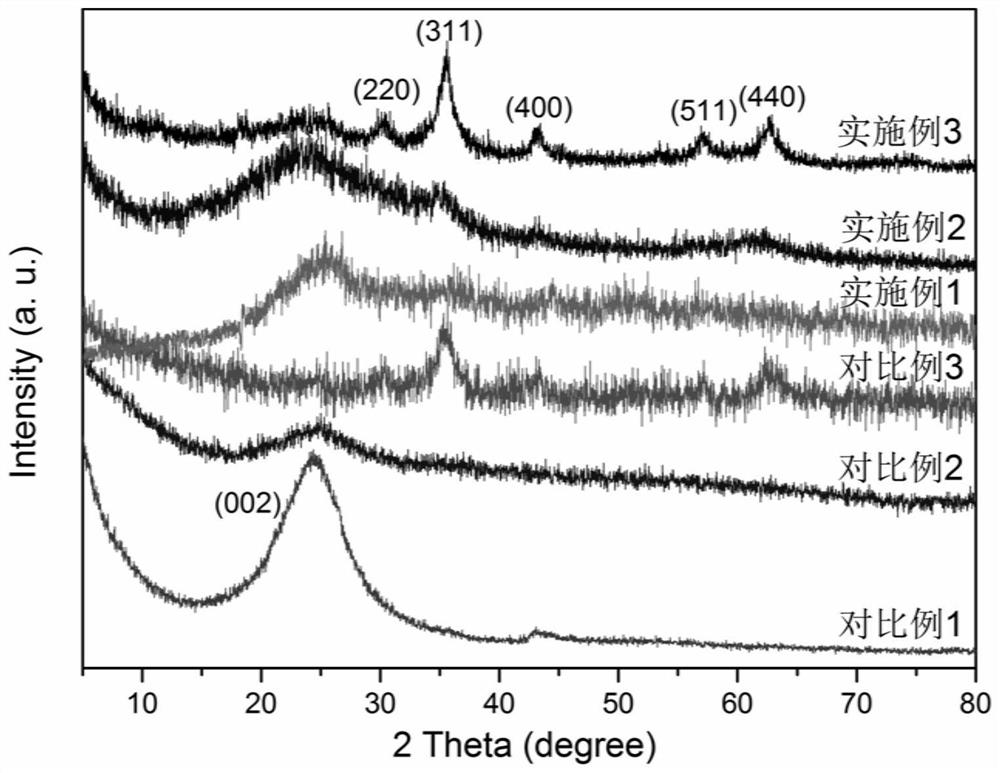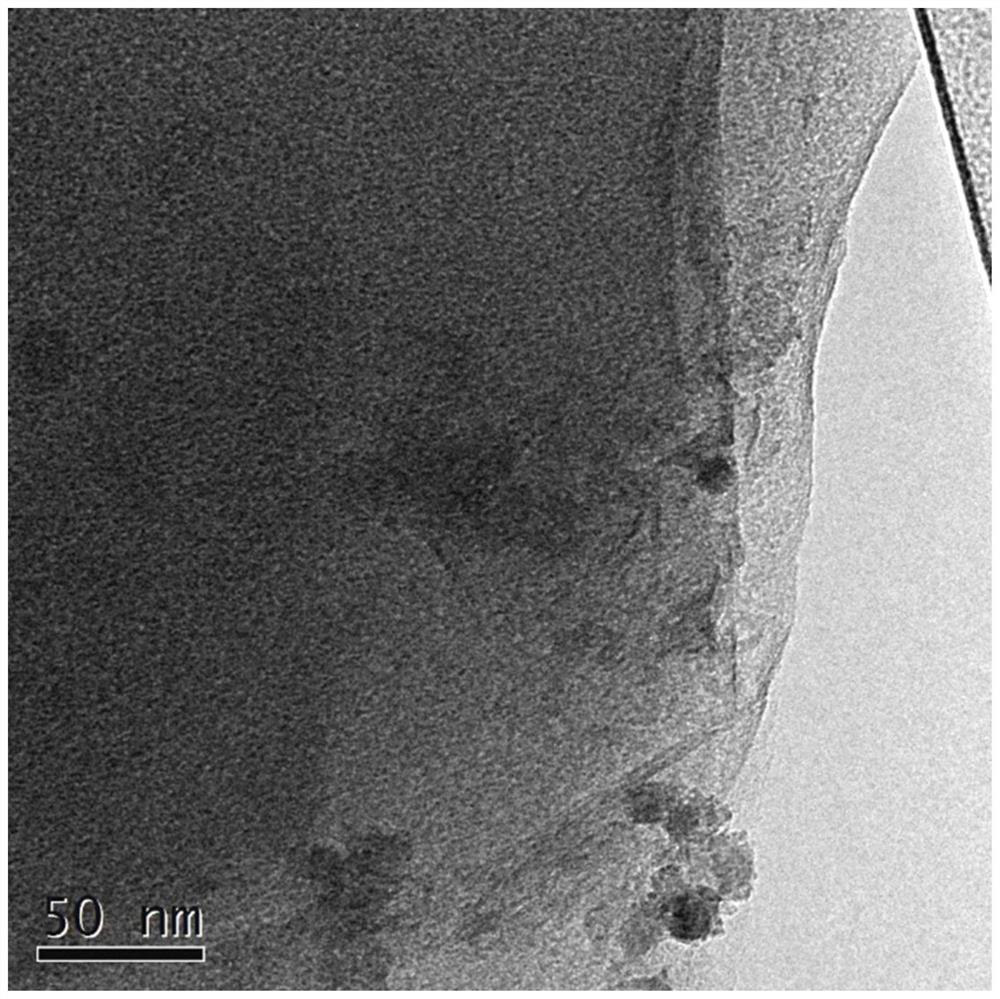A kind of preparation method and application of graphene/cobalt nickel manganese ferrite nanocomposite material
A nano-composite material, cobalt-nickel-manganese technology, applied in the field of microwave-absorbing materials, can solve problems such as complex process flow, long reaction time, and harmful reaction solvents
- Summary
- Abstract
- Description
- Claims
- Application Information
AI Technical Summary
Problems solved by technology
Method used
Image
Examples
Embodiment 1
[0065] Step 1: Prepare graphene oxide by Hummers method. Specifically include the following stages: (1) low temperature reaction stage: 10g natural graphite powder and 5g sodium nitrate are added in 230mL concentrated sulfuric acid (ice-water bath), after stirring for a certain period of time, slowly add 30g potassium permanganate, during the addition process, Keep the reaction temperature not exceeding 20°C, and bathe in ice water for a certain period of time. (2) Medium-temperature reaction stage: remove the ice bath, raise the temperature of the water bath to 35° C., and stir for a certain period of time. During this process, as the reaction proceeded, the foam slowly disappeared, and only a small amount of gas was produced in the mixture, which was grayish brown. (3) High-temperature reaction stage: Slowly add 460mL of distilled water into the mixture, strong bubbles will be generated, the temperature will rise to 95°C, and the solution will turn brown. Water bath at thi...
Embodiment 2
[0079] Step 1: Same as Example 1.
[0080] Step 2: Add 0.1 g of graphene oxide into 80 mL of ethylene glycol solution, and then ultrasonically disperse for 1 h.
[0081] Step 3: Add 89.6mg ferric chloride, 11.8mg cobalt chloride, 21.7mg nickel chloride hexahydrate, 18.0mg manganese chloride tetrahydrate into 20mL ethylene glycol solution, in which iron salt, cobalt salt, nickel salt, manganese The ratio of the sum of the salt mass to the graphene oxide mass is 1.4:1, and ultrasonically dispersed for 1 h.
[0082] Step 4: Add the homogeneous solution obtained in step 3 dropwise to the solution obtained in step 2, and then ultrasonically disperse for 1 h. Then the mixed solution was magnetically stirred for 4 h.
[0083] Step 5: Add ammonia water to adjust the pH of the mixed solution to 11. After stirring for 1.5 h, add 1.5 mL of hydrazine hydrate solution.
[0084] Step 6: Pour the above mixed solution into a polytetrafluoroethylene reaction tank, and carry out microwave sy...
Embodiment 3
[0088] Step 1: Same as Example 1.
[0089] Step 2: Add 0.1 g of graphene oxide into 80 mL of ethylene glycol solution, and then ultrasonically disperse for 1 h.
[0090] Step 3: Add 116.1mg ferric chloride, 15.2mg cobalt chloride, 28.1mg nickel chloride hexahydrate, 23.3mg manganese chloride tetrahydrate into 20mL ethylene glycol solution, in which iron salt, cobalt salt, nickel salt, manganese The ratio of the sum of the salt mass to the graphene oxide mass is 1.8:1, and the ultrasonic dispersion is 0.5h.
[0091] Step 4: Add the homogeneous solution obtained in step 3 dropwise to the solution obtained in step 2, and then ultrasonically disperse for 0.5 h. Then the mixed solution was magnetically stirred for 4 h.
[0092] Step 5: Add ammonia water to adjust the pH of the mixed solution to 10. After stirring for 1 h, add 1 mL of hydrazine hydrate solution.
[0093] Step 6: Pour the above mixed solution into a polytetrafluoroethylene reaction tank, and carry out microwave sy...
PUM
| Property | Measurement | Unit |
|---|---|---|
| particle diameter | aaaaa | aaaaa |
| thickness | aaaaa | aaaaa |
| particle size | aaaaa | aaaaa |
Abstract
Description
Claims
Application Information
 Login to View More
Login to View More - R&D
- Intellectual Property
- Life Sciences
- Materials
- Tech Scout
- Unparalleled Data Quality
- Higher Quality Content
- 60% Fewer Hallucinations
Browse by: Latest US Patents, China's latest patents, Technical Efficacy Thesaurus, Application Domain, Technology Topic, Popular Technical Reports.
© 2025 PatSnap. All rights reserved.Legal|Privacy policy|Modern Slavery Act Transparency Statement|Sitemap|About US| Contact US: help@patsnap.com



